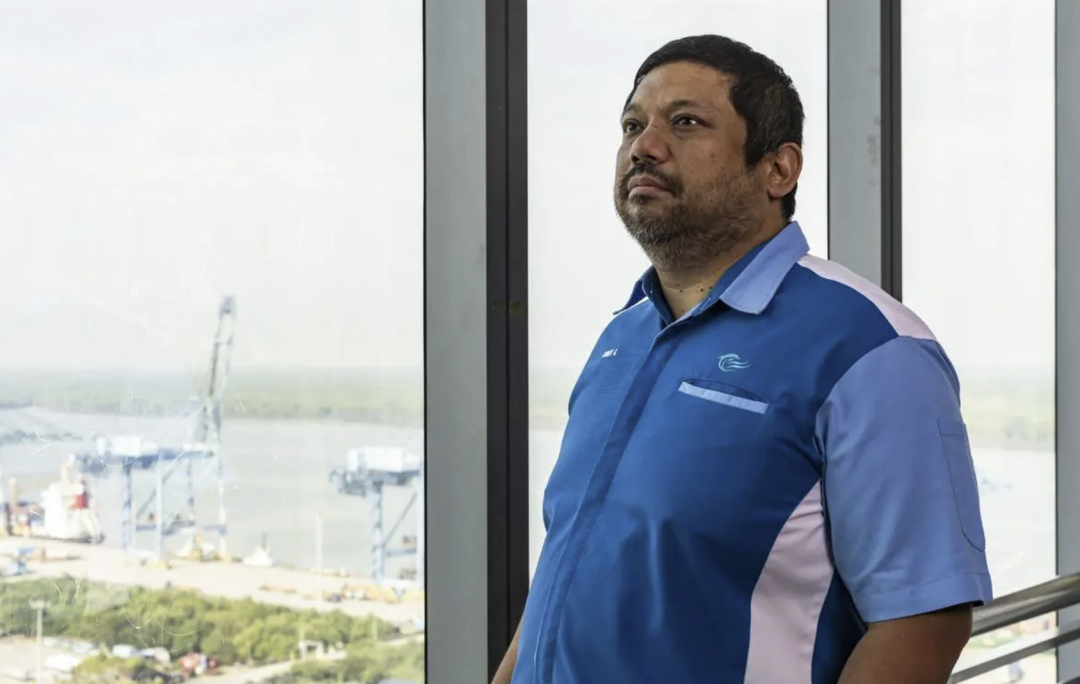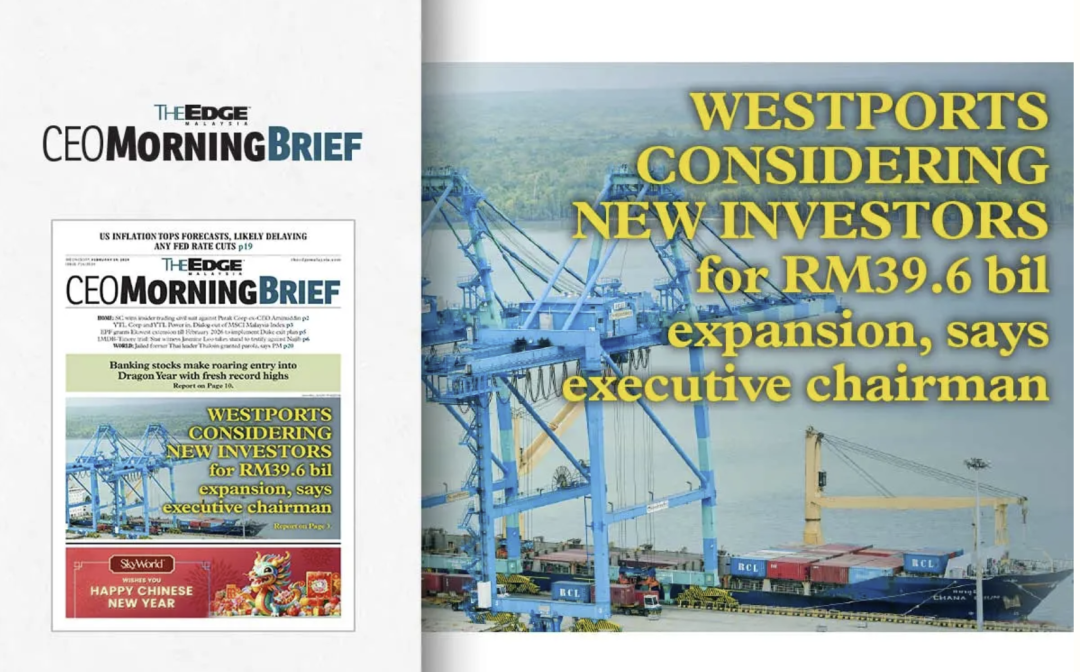
马来西亚西港执行主席:为396亿扩张计划 考虑新投资者

(吉隆坡13日讯)西港控股(Westports Holdings Bhd)正考虑外部策略投资者,为其396亿令吉的扩张提供资金。
执行主席Datuk Ruben Emir Gnanalingam表示:“如果能为我们增加价值,我们将持开放态度。我们并没有排除任何可能性。”
他接受彭博社访问时说,该公司也在考虑一项股息再投资计划和贷款,为巴生设施的扩建筹资。
西港是东南亚第二大港口,其计划在特许经营期间(至2028年),将吞吐量从目前的1400万个标准货柜,增至2700万个。
新加坡正在建设的大士港(Tuas Port)将于2040年建成,预计耗资200亿新元(708亿2000万令吉),届时将成为世界上最大的自动化码头。
同时,由于预计到2030年交通量将超过该海峡的容量,泰国提议完全绕过该航道,并提出一项耗资280亿美元(1334亿9000万令吉),全长62英里(100公里)的“陆桥”,连接两个海港,并将通行时间缩短4天。
针对此,Ruben表示他目前并不担心这个想法,因为客户尚未认真考虑该项目作为替代方案。
购买资产
该股自10月触及近期低位以来,弹升了逾20%,超过富时隆综指的5%涨幅。三分之二的分析员给予“买入”评级。
Ruben去年接替已故父亲Tan Sri Gnanalingam Gunanath Lingam担任公司主席,他说,西港控股正在物色收购东南亚其他港口的机会,但不会为资产支付过高的价格。
“我们竞标过一些港口,但我们对出价是有上限的。我们的目标是获得可观的投资回酬,而不是插旗和赔钱。”

(Feb 13): Malaysia’s biggest port operator, Westports Holdings Bhd, is considering external strategic investors to help fund a RM39.6 billion expansion that will see capacity nearly double in coming decades.
“We would be open to it, if it’s someone who can come and add value to us,” executive chairman Datuk Ruben Emir Gnanalingam said. “We have not ruled anything out.”
The company is also looking at a dividend reinvestment plan and borrowings to help fund the expansion of the facility in Klang, he said in an interview at the site. The port is the second-biggest in Southeast Asia, and its plan will see capacity increase to 27 million twenty-foot equivalent units, from 14 million currently, over the course of its concession, which runs until 2082.
Westports’ expansion, which kicks off with the first of eight new container terminals becoming operational in 2027, echoes similarly ambitious plans from neighbours across the Malacca Strait, one of the world’s busiest sea routes.
Singapore is building what will be the world’s largest automated terminal when its Tuas Port is completed in 2040 at an expected cost of S$20 billion (RM70.82 billion). Meanwhile, with traffic volumes forecast to exceed the strait’s capacity by 2030, Thailand has proposed bypassing the shipping lane entirely. It has put forward a plan to build a US$28 billion (RM133.49 billion), 62-mile (100km) “land bridge” that will link two seaports and cut travel time by four days.
On that front, Ruben said he’s not worried by the idea at the moment, because his customers are yet to seriously consider the project as an alternative.
Buying assets
The company’s shares have surged more than 20% since their recent low in October, beating the roughly 5% gain in the Kuala Lumpur benchmark. Two-thirds of analysts who cover the firm have a “buy” recommendation.
Westports is looking at opportunities to buy other ports in Southeast Asia, but won’t overpay for an asset, according to Ruben, who succeeded his late father Tan Sri Gnanalingam Gunanath Lingam as the chairman last year.
“There have been ports we have bid for, but we have a limit of how high you can go,” he said. “Our goal is to make decent returns on investment. Our goal is not to plant flags and lose money.”
Sustainability is another major focus. The global maritime industry is under growing scrutiny, as its greenhouse gas emissions have increased 20% in the past decade, and it now accounts for about 3% of the world’s total. Shipping firms are accelerating efforts to go green, overhauling fleets to meet an industry target for net zero emissions by 2050.
Westports’ efforts to reduce its carbon footprint have seen mixed results, and the firm is now rethinking its use of electric vehicles (EVs) — a mainstay of many companies’ efforts to reduce their emissions.
“The crazy thing is, the EV trucks we tried produced more emissions than diesel under certain conditions, because our grid is so dirty due to coal,” he said. “So we have decided to slow down on EV use.”
来源:阅读原文

